Black Cats in Art for Spooky Season
The enigmatic black cat, shrouded in mystery and often associated with magic and witchcraft, has a prominent role in the realm of art. Let’s...
Andreea Iancu 9 November 2023
I like cats and I’m sure that many of you do, too. A fascinating animal, the cat has earned itself an important place in culture, literature, and art. Artists gave it a rich variety of symbolic meanings. However, at times they seem to hide these cute creatures from our sight. Can you spot the cats in their paintings? Beware, though, if you don‘t spot all the cats, you will have to sing along to the song.
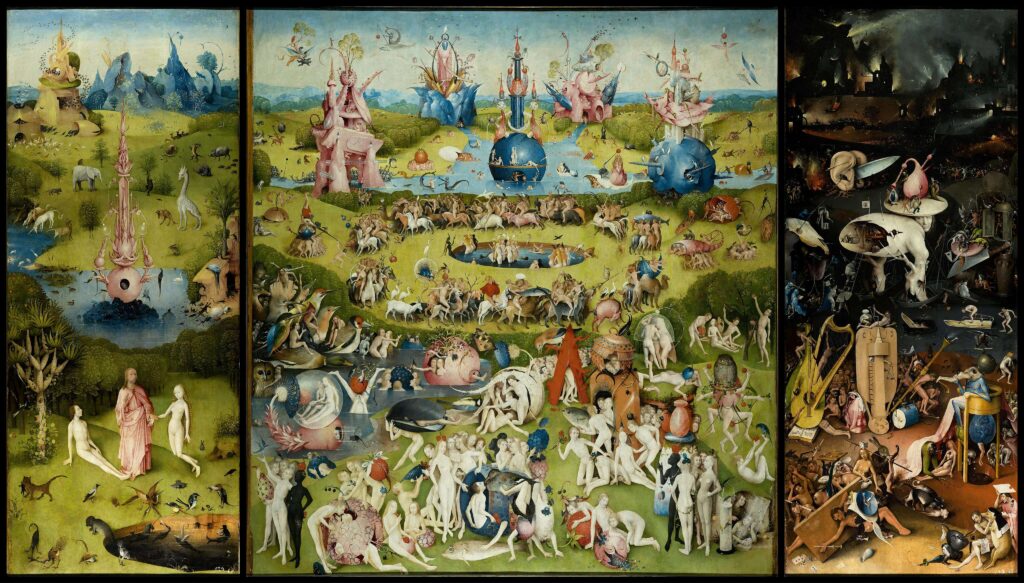
Hieronymus Bosch’s (c. 1450–1516) triptych The Garden of Earthly Delights is full of symbolic references. It illustrates the human journey between divine influence and diabolic temptation, between salvation and damnation. For example, in the moment of Creation, God is presenting Eve to the astonished Adam. Here, we should think of love, harmony, and wonder at a world that does not know sin. However, close to Adam, we spot a big cat carrying prey in its mouth. In this Paradise, it symbolizes the arrival of evil, even before the appearance of the tempting serpent.
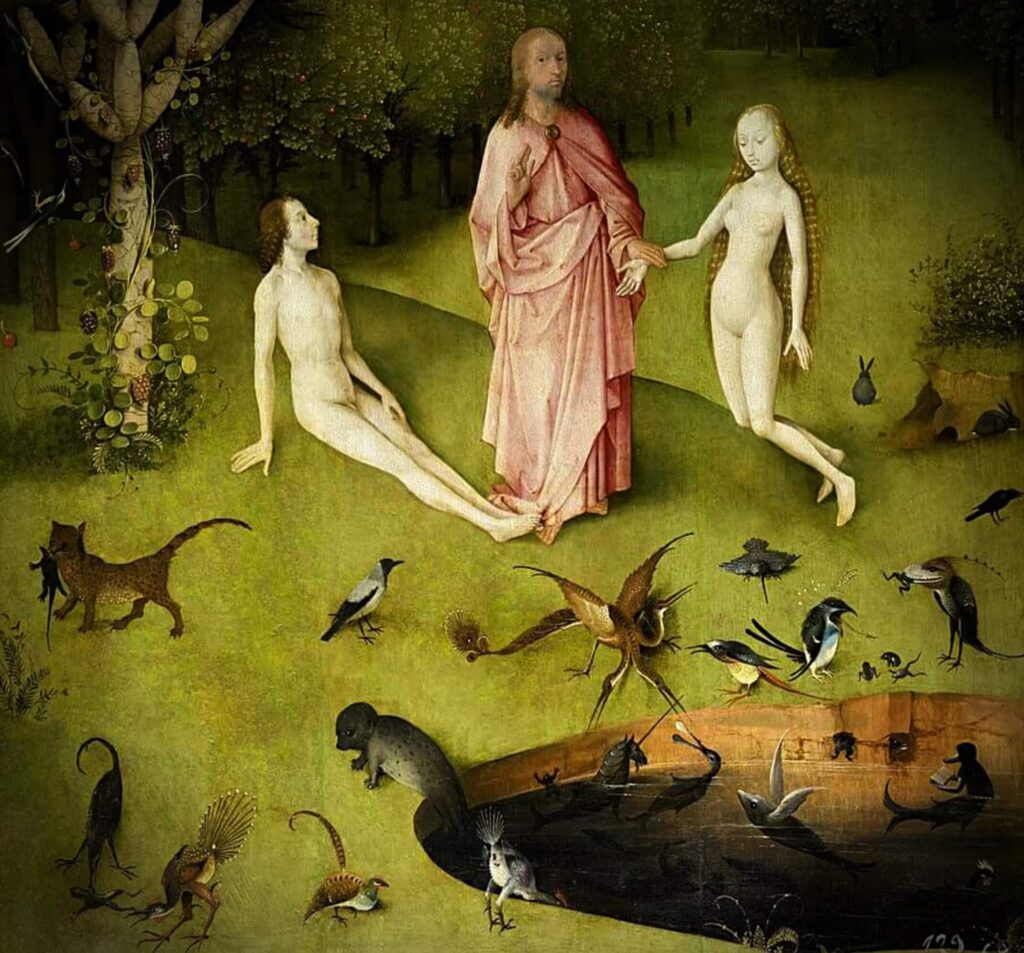







This kind of attitude developed during the Middle Ages. At that time cats were persecuted. For example, in 1232, Pope Gregory IX urged the Inquisition to keep an eye on black cats. Later, in 1484, Pope Innocent VIII, decreed that these creatures were helpers of the demon worshipped by witches. Despite all their troubles, cats continued to purr blissfully at home, becoming emblems of the pleasures of the household. They definitely know how to position themselves in the best spot in the house to find warmth in winter and coolness in summer.
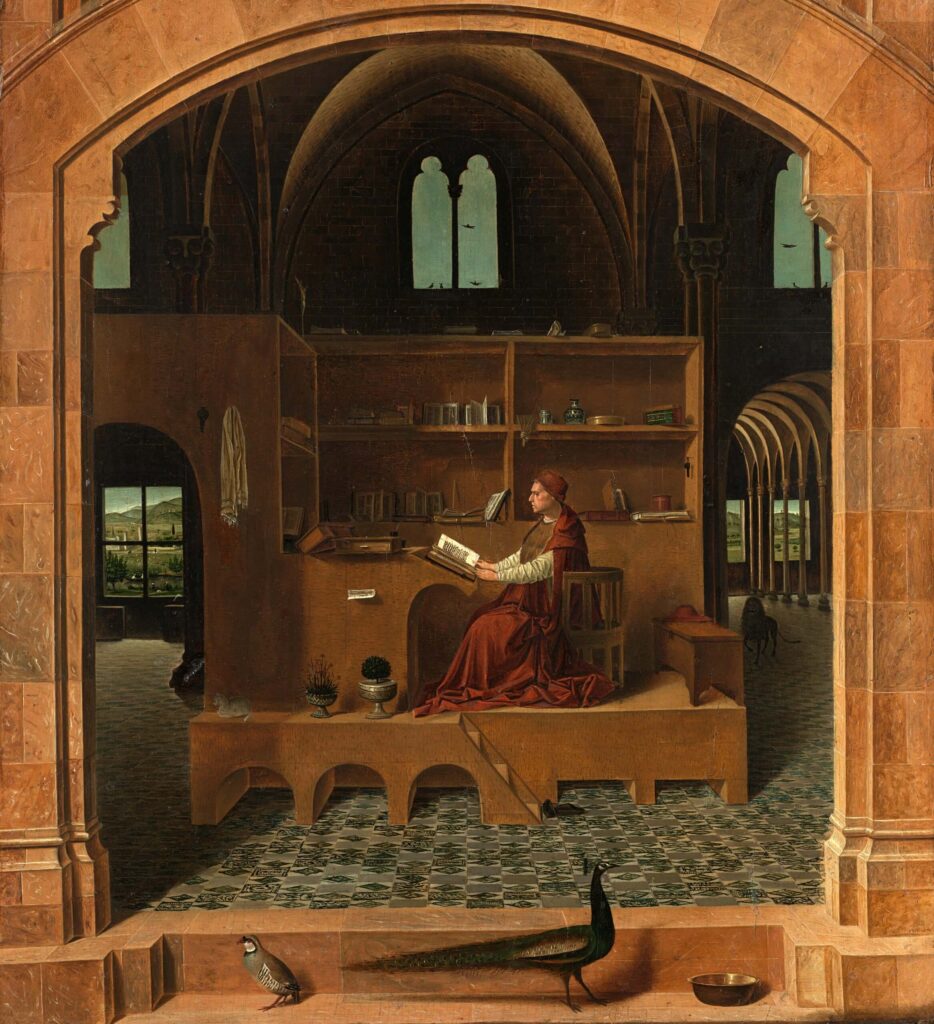







Antonello da Messina (ca. 1430–1479), an Italian artist, painted St. Jerome (ca. 347–420) working in his studio in solitude. Jerome of Stridon is an ideal model of the learned humanist. The book he is reading represents knowledge. The artist also introduced numerous animals as if to invite us to look at the painting and to discover its every secret. For example, two elegant birds sit on the step of the doorway. The peacock generally symbolizes immortality, while the partridge can mean either the truth or deceit.
As we move deeper into the room, we notice a lion, padding towards the saint. It refers to the story of St. Jerome pulling a thorn out of a lion’s paw. In gratitude, the lion followed the priest around for the rest of his life, like a pet. But can you spot the cat?
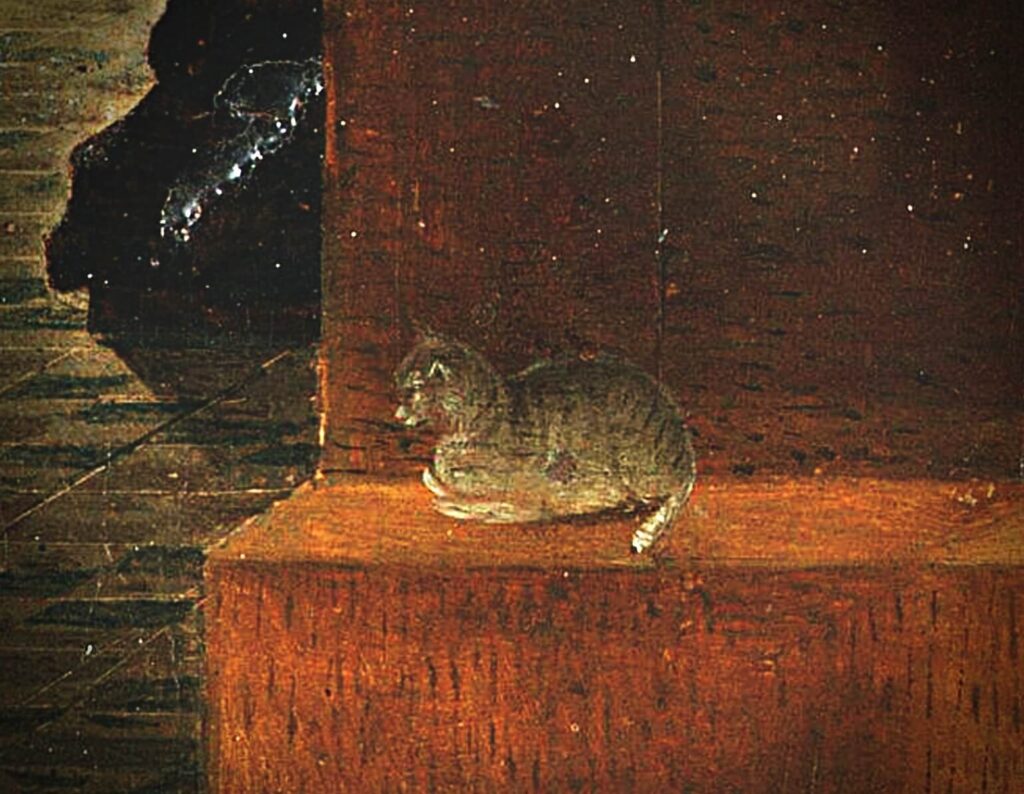







The cat is sitting at the far left-hand side of the platform. Enjoying the shafts of sunlight, it might be asleep or possibly lost in contemplation. Initially, the painter had not planned to include the cat in this painting. He added it at a later time, using less saturated colors. As a result, over time the cat has become less pronounced. Still, Da Messina shows the alliance between intellectuals and cats, which becomes more significant from the beginnings of the Renaissance onward.
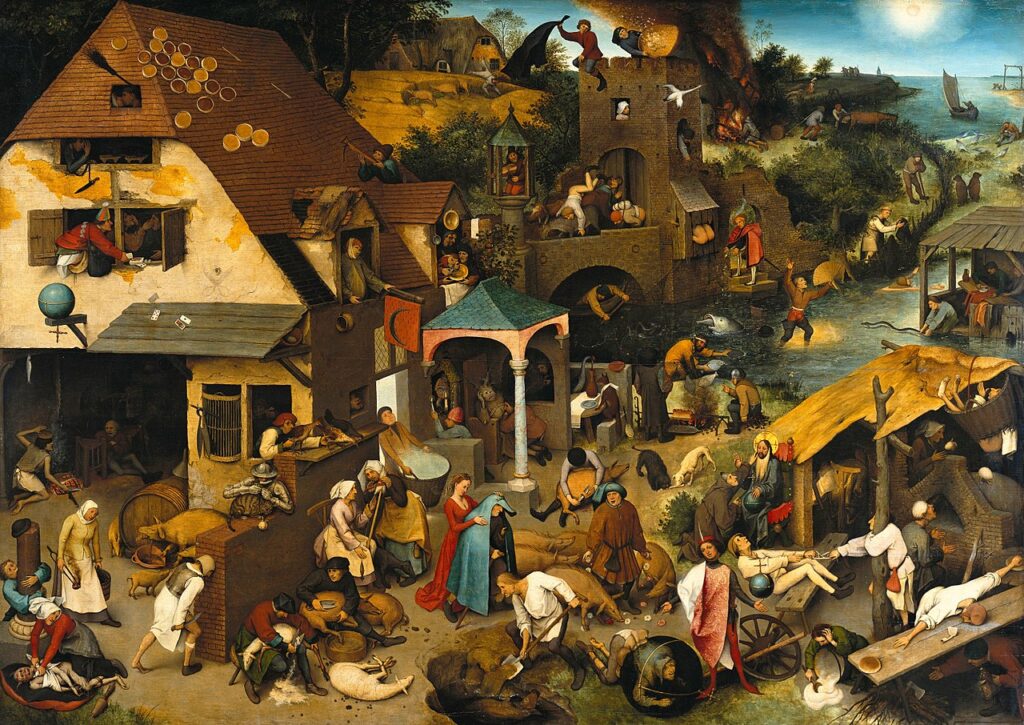







Pieter Bruegel the Elder (ca. 1525/1530–1569), a master of Northern Renaissance, managed to pack more than 120 proverbs and popular sayings in his “catalog of human folly.” Even today we can still guess the meanings of some sayings. For example, a villager who is banging his head against the brick wall is trying to achieve the impossible. Meanwhile, another man attempts to bell a cat without being scratched. He wants to acquire courage but has overdone his armor because the cat seems rather placid.
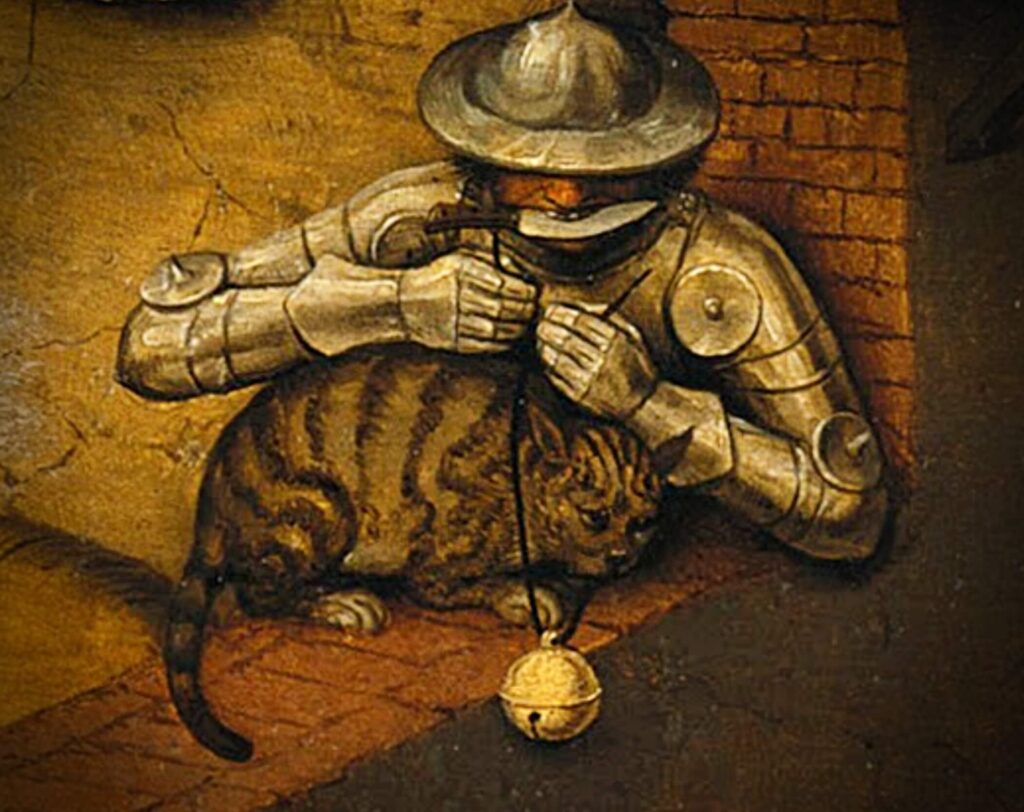







Once fitted with a bell, the cat will announce its presence. It can no longer catch mice, thus bringing loss and misfortune to its owners. Therefore, such an undertaking makes no sense. Here Bruegel warns us against taking risky and vain actions. At the same time, he condemns cowards who need to arm themselves to become more courageous.
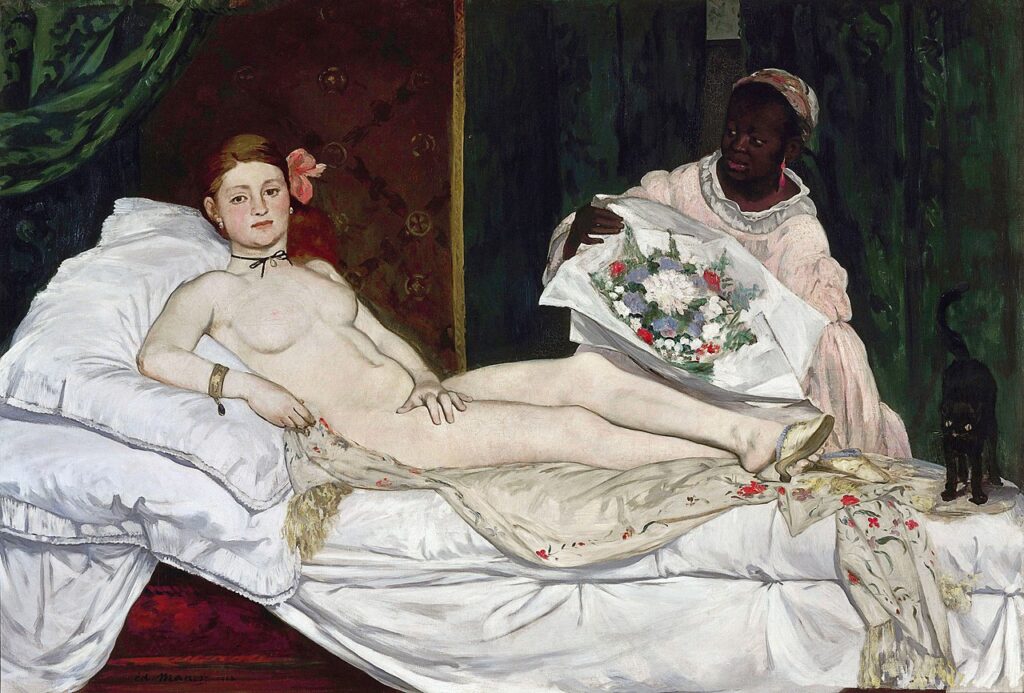







Painted by the French artist, Édouard Manet (1832–1883), Olympia shows a nude woman lying on a bed. Manet’s painting was inspired by Titian’s Venus of Urbino. However, in Titian’s work, the two handmaidens stand behind Venus and the little dog, a symbol of fidelity, is lying beside her. Manet replaced the two handmaidens with a Black woman. She holds a bouquet, perhaps a gift from the woman’s lover, waiting behind the green drape.
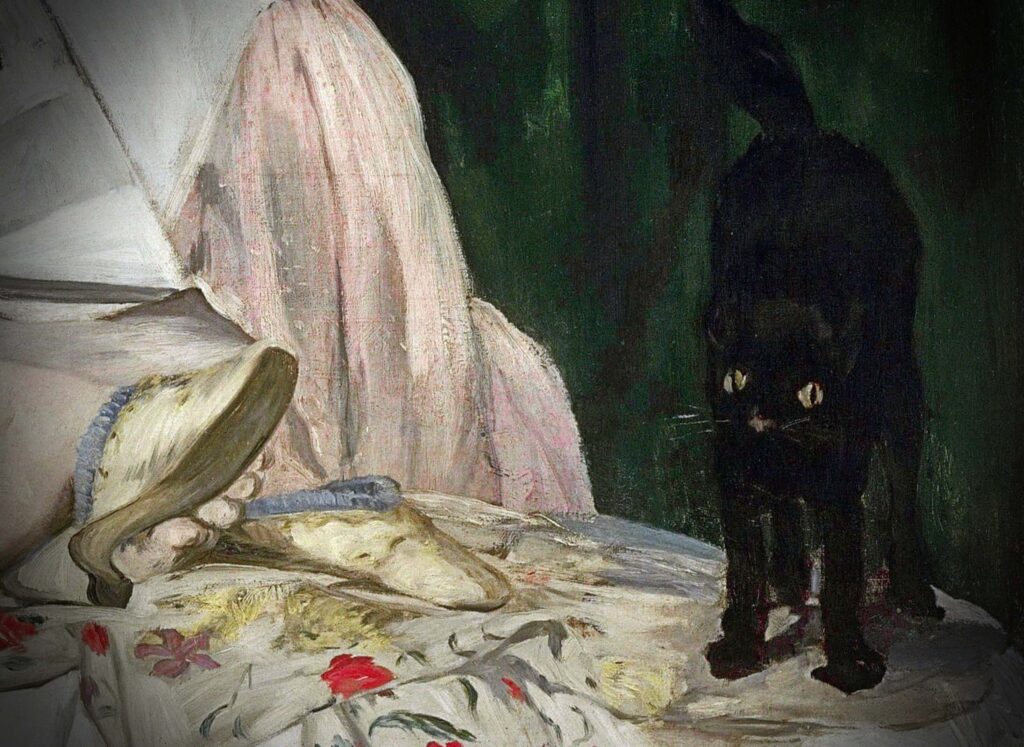







Furthermore, Manet substituted the little dog with a black cat. This creature is sometimes connected with nocturnal promiscuity. In Western tradition, the color black is also associated with evil and death. These details, as well as Olympia’s pose and challenging gaze, reinforced the impression that this is a prostitute. Consequently, the profanation of the idealized nude, the very foundation of academic tradition, caused a shock at the 1865 Salon.
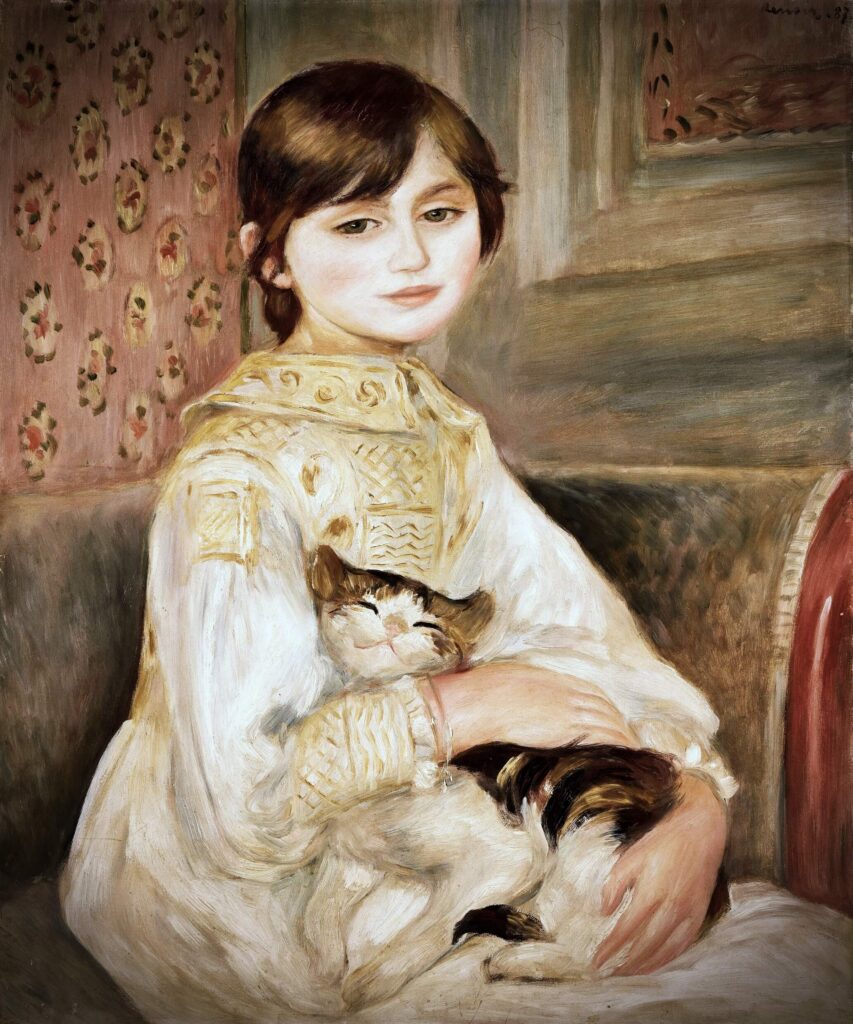







An affectionate cat is easy to spot since he usually likes to purr. The Manets admired the talent of French artist, Pierre-Auguste Renoir (1841–1919). Consequently, they convinced him to paint a portrait of Julie Manet. She was the daughter of artist Berthe Morisot and Eugene Manet, a younger brother of Édouard Manet.
In the 18th century, the cat was seen as a malicious symbol of seduction, however, in the following century, this attitude began to change. This cute creature became the companion of young women, who loved to cuddle it, receiving affection in return.
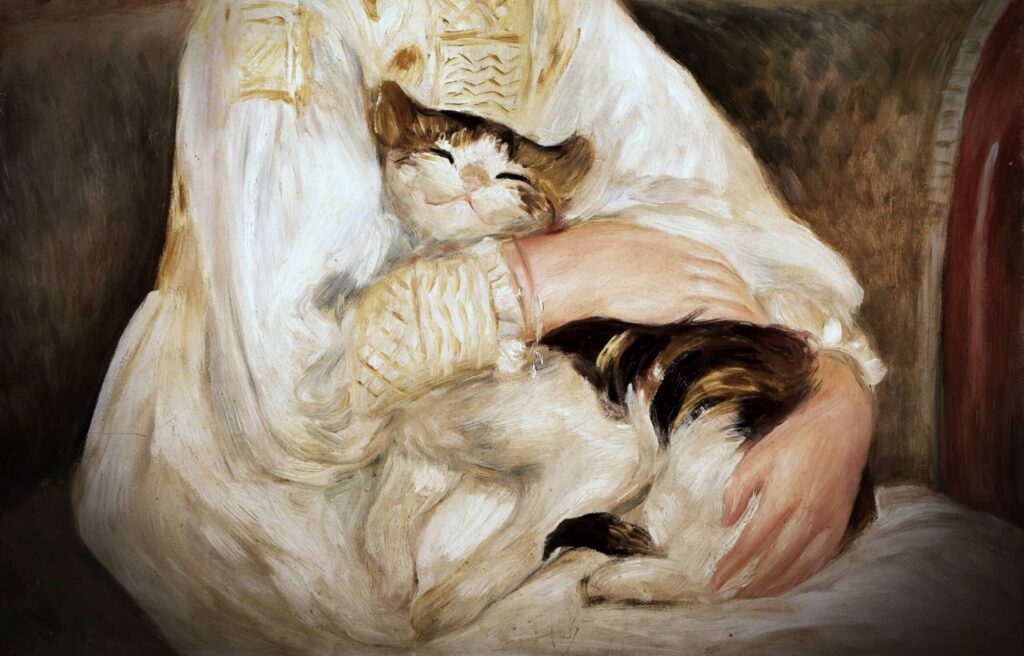







Renoir highlighted this aspect, keeping with his soft and sensuous style of painting. Although Julie holds an ordinary tabby, there is a direct, intense, and emotional relationship between them. The presence of the cat in the painting also emphasizes Renoir’s sensitivity to his young model.
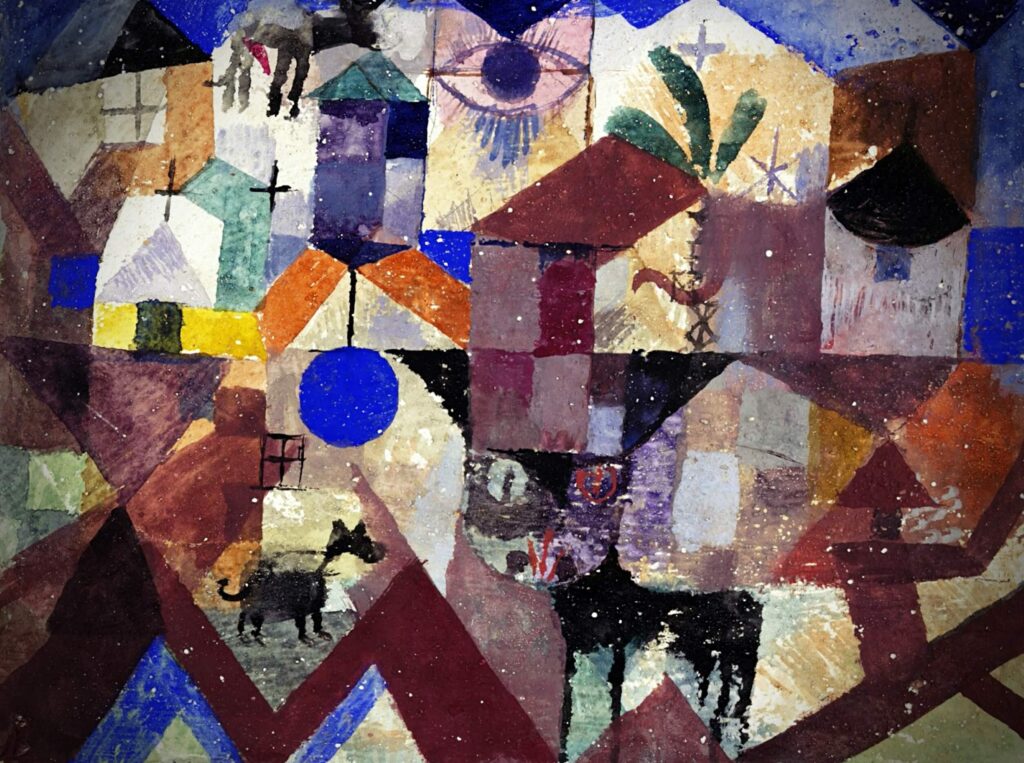







Paul Klee (1879–1940), a Swiss-born artist, depicted his favorite animals in over 50 works. He even had his cats Fritzi and Bimbo make paw prints and cold-wet nose kisses. Klee used animal images to express his vision of nature’s extremes. The geometrical shapes of the colorful zoo represent the artificial world, which fluctuates toward abstraction. Still, we can recognize windows, buildings, and a church.
The cat has to navigate through the human world. His head appears too big for his torso and he is attentively looking out at us. At the same time, he is being watched by the eye of God in the upper half of the painting. The cat in stuck between the world of abstraction and representation. He looks surprised by this imaginary world. He is like a Schrödinger’s cat who is simultaneously both alive and dead. However, the cat may well be in his dreams and “painted” his fantastical world.
The Duetto buffo di due gatti is a “comic duet for two cats” and a popular performance piece for two sopranos. It is attributed to an Italian composer, Gioachino Rossini (1792–1868). However, this compilation was written in 1825 and draws on his opera, Otello. First, we have to memorize the “lyrics”: “meow-meow-meow-meow-meow-meow.”
Now let’s watch the “two cats” singing Duetto buffo di due gatti and try to sing along.
DailyArt Magazine needs your support. Every contribution, however big or small, is very valuable for our future. Thanks to it, we will be able to sustain and grow the Magazine. Thank you for your help!